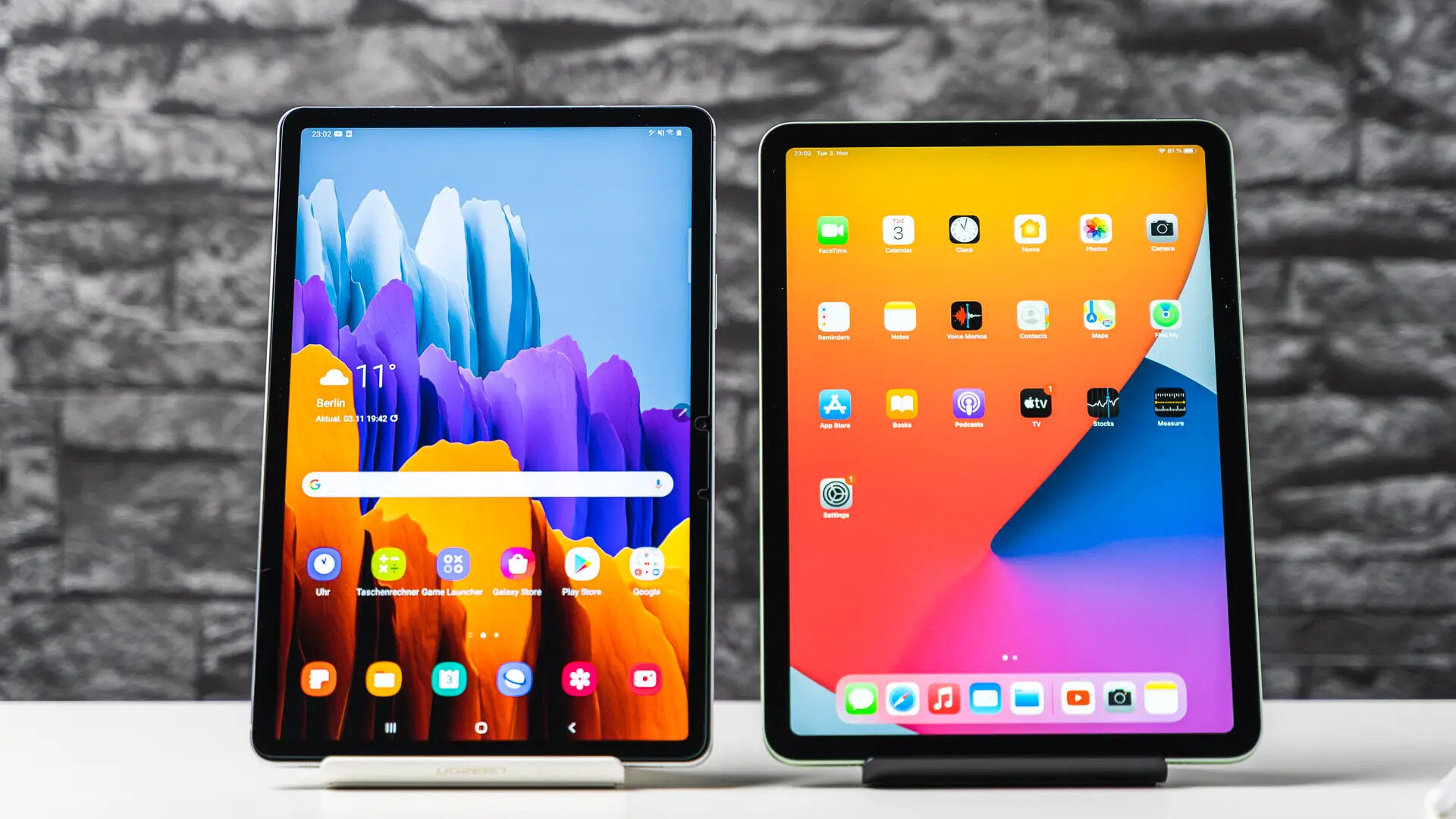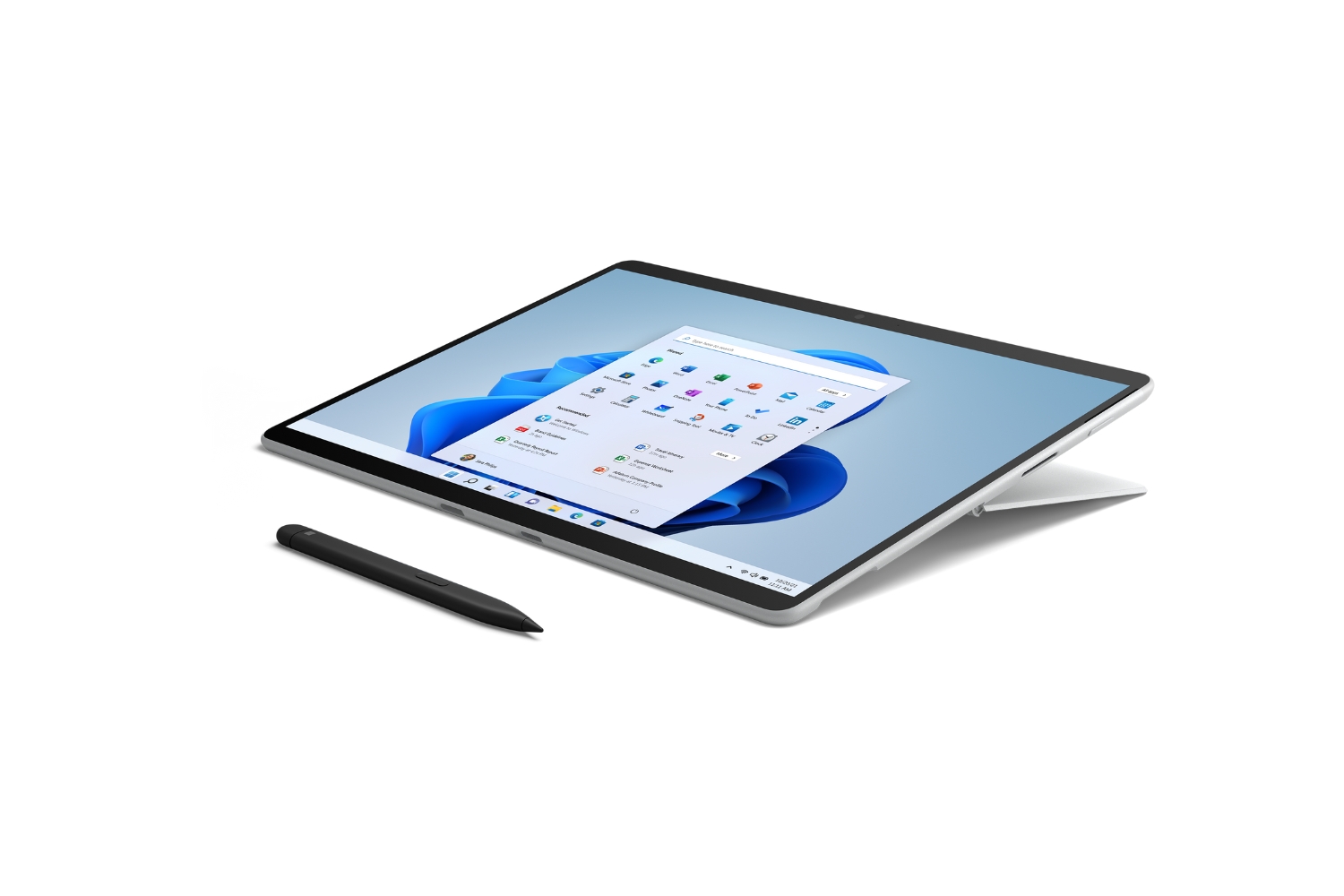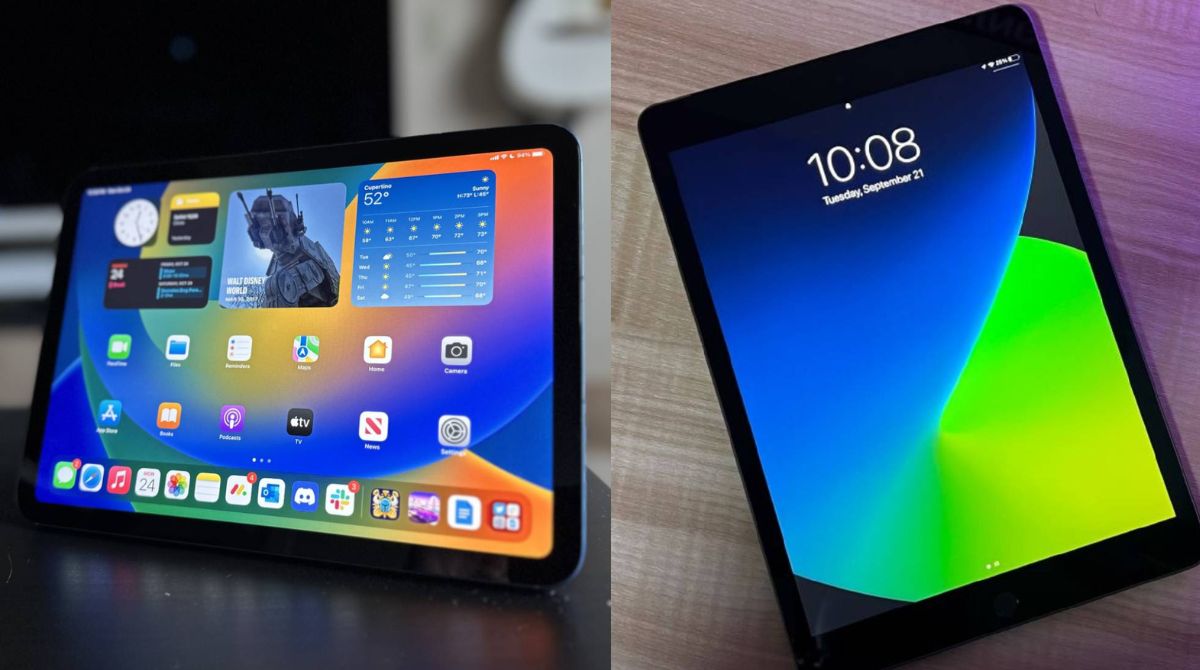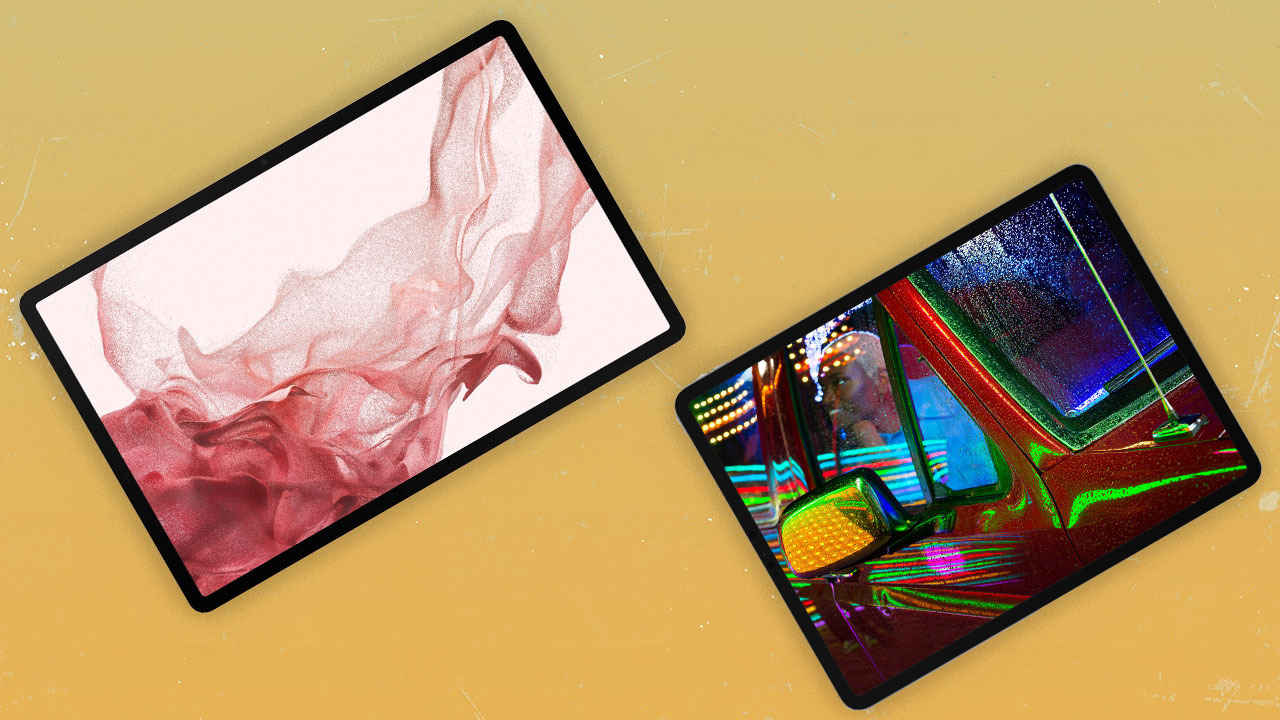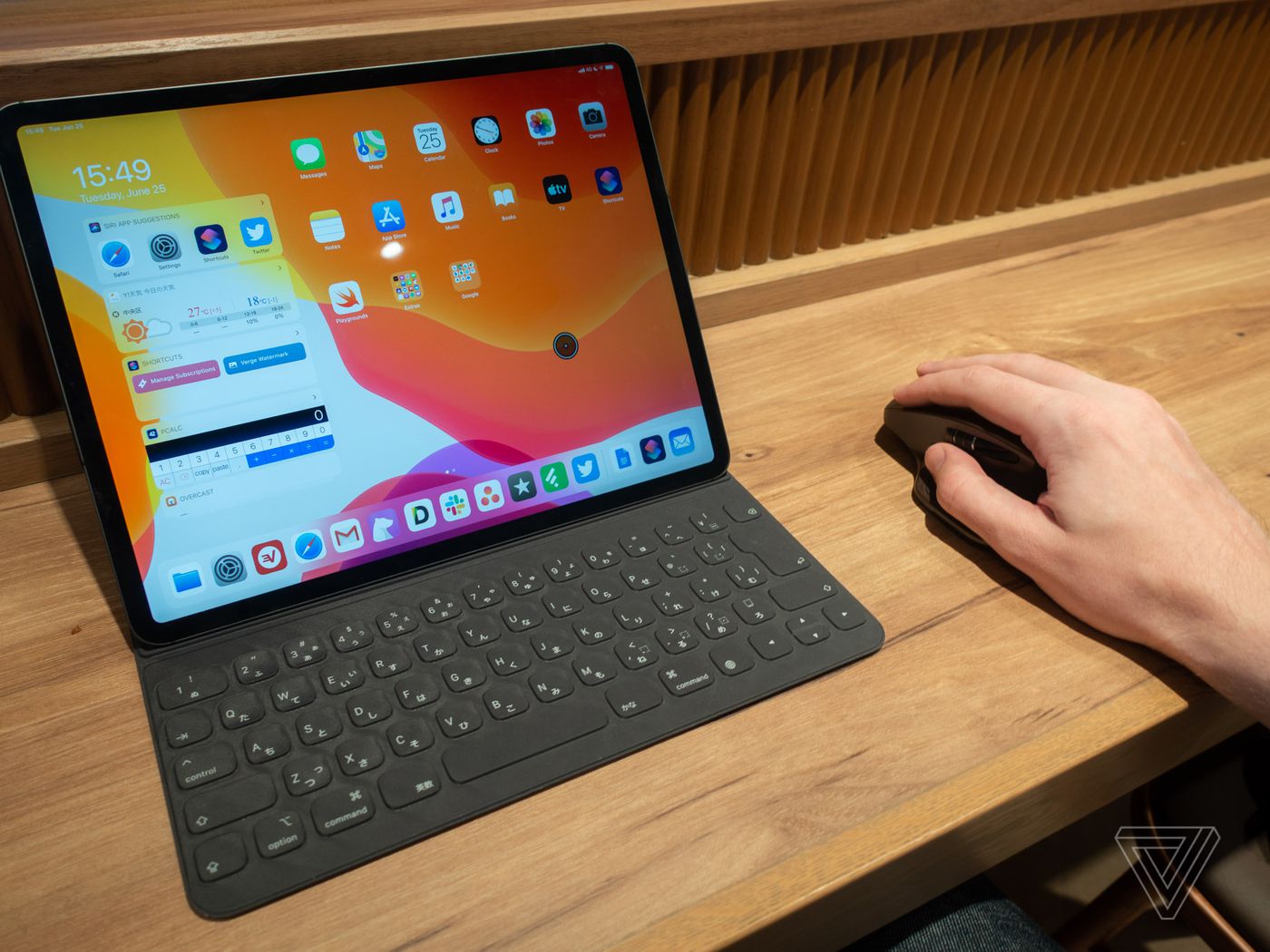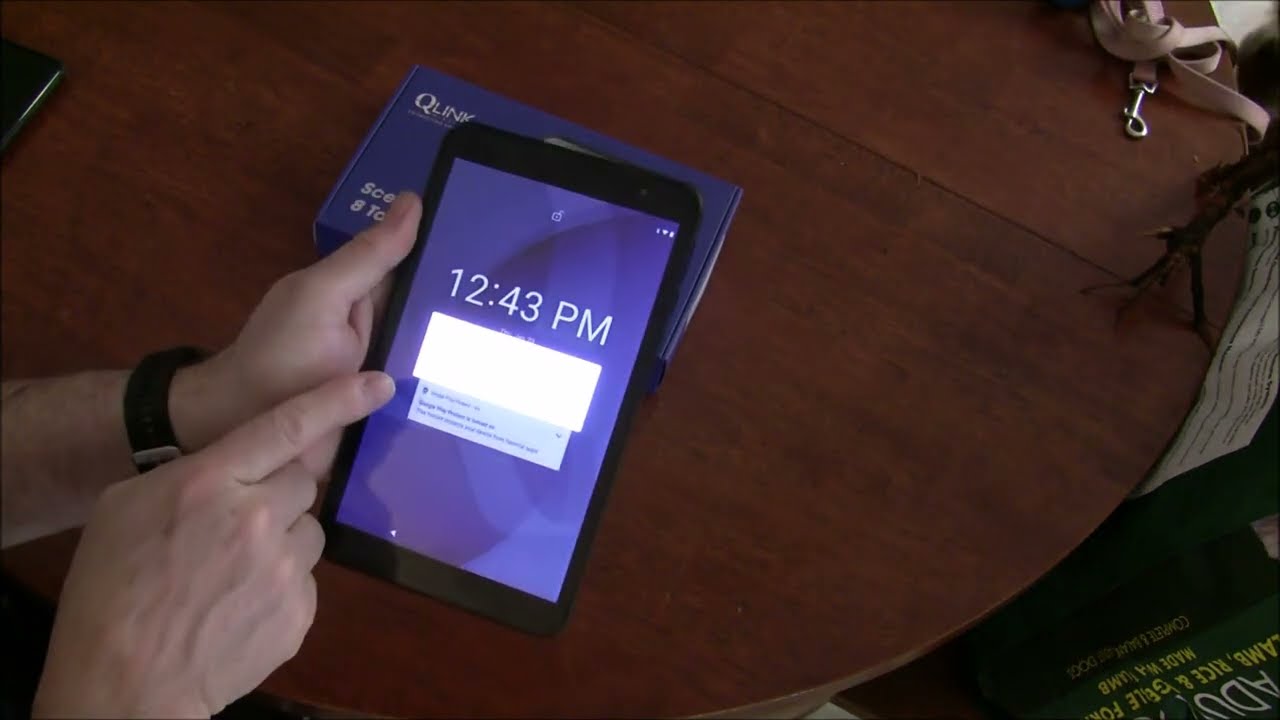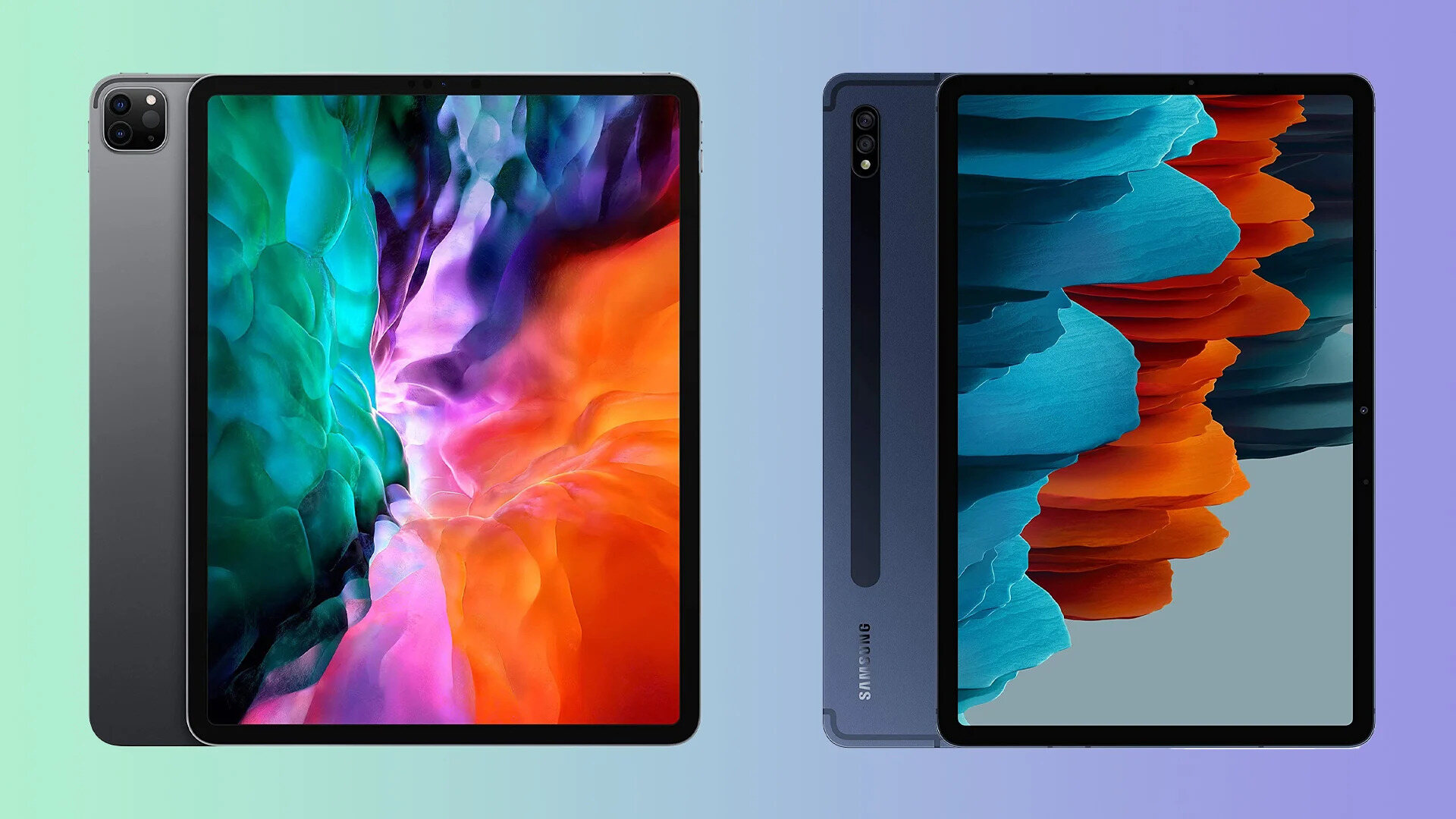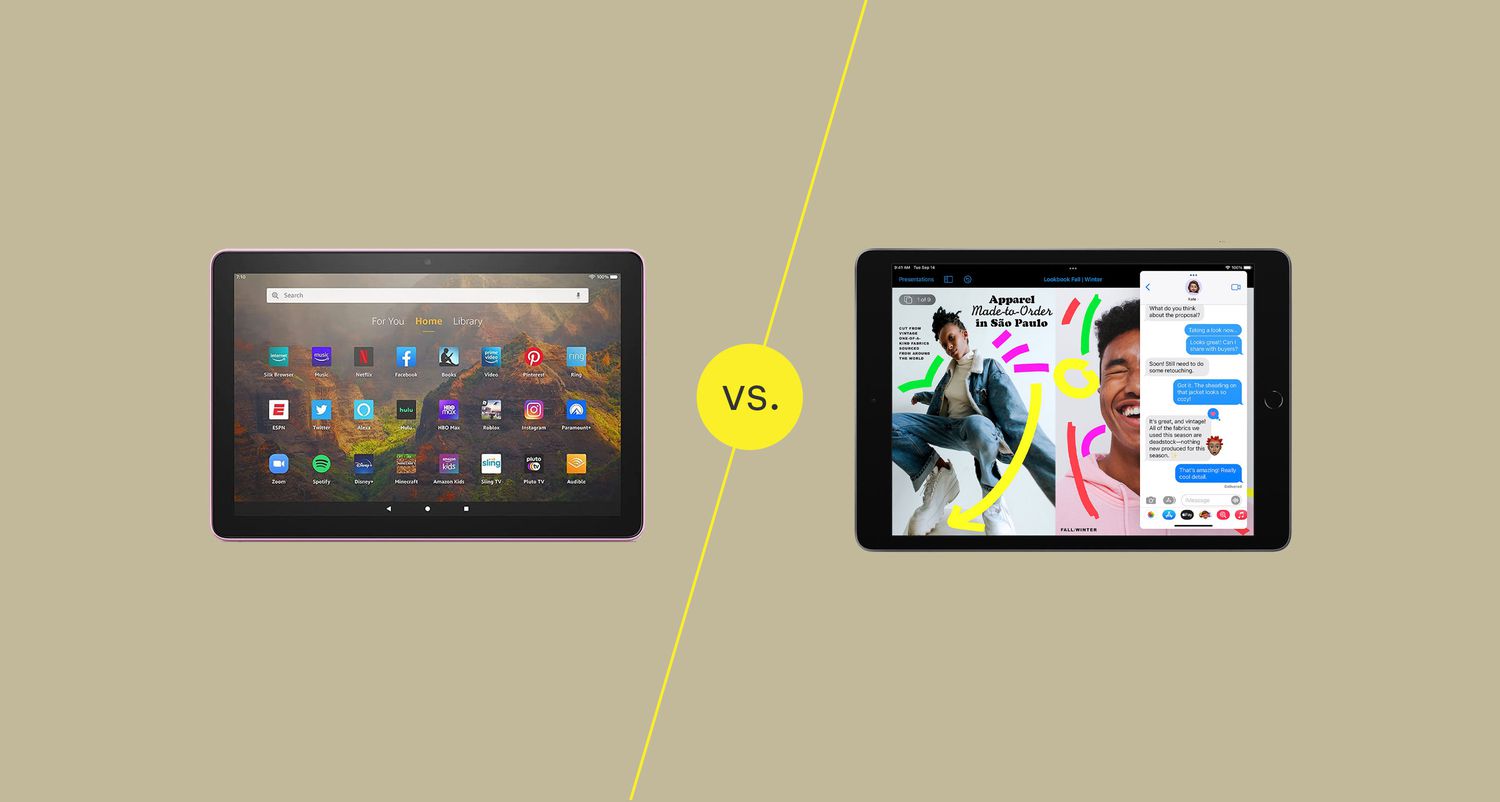Introduction
When it comes to tablet devices, there’s no denying the dominance of the iPad in the market. With its sleek design, powerful performance, and extensive app ecosystem, Apple has set the benchmark for tablets. However, for those who prefer the Android operating system or are looking for a more affordable alternative, there are several Android tablets available that can give the iPad a run for its money.
Android tablets offer a wide range of options to suit different needs and budgets. From high-end flagship tablets with cutting-edge features to budget-friendly options that still deliver decent performance, there’s something for everyone. In this article, we will explore some of the top Android tablets that are comparable to the iPad in terms of features, performance, and user experience.
While each tablet has its unique strengths and weaknesses, we will evaluate them based on key factors like display quality, processor and performance, operating system, app ecosystem, design and build quality, battery life, camera quality, storage options, connectivity, and price. By considering these factors, you’ll be able to make an informed decision and find an Android tablet that meets your specific requirements.
Whether you’re a student looking for a tablet for studying and note-taking, a professional seeking a device for productivity and multitasking, or an entertainment enthusiast who wants a tablet for streaming movies and playing games, there’s an Android tablet out there that can rival the iPad and offer a comparable experience.
So, if you’re ready to explore the world of Android tablets and discover the best alternatives to the iPad, read on to find the perfect tablet that suits your needs and preferences. Let’s dive into the comparisons and discover the top contenders in this battle of Android vs. iPad tablets.
Display Quality
One of the key factors to consider when comparing Android tablets to the iPad is the display quality. The iPad is known for its stunning Retina display, which offers sharpness, clarity, and vibrant colors. However, several Android tablets can match or even surpass the iPad’s display quality.
For example, the Samsung Galaxy Tab S7 features a stunning Super AMOLED display with a high resolution and wide color range. This results in incredibly sharp and vibrant visuals, making it perfect for multimedia consumption and gaming. Additionally, the tablet’s high refresh rate ensures smooth scrolling and fast-paced gameplay.
Another contender is the Google Pixel Slate, which boasts a brilliant Molecular Display with excellent color accuracy and sharpness. The display supports HDR content, offering an immersive viewing experience for movies and videos. The tablet also has a wide color gamut, resulting in lifelike colors and deep blacks.
When it comes to budget-friendly options, the Amazon Fire HD 10 offers a Full HD display that delivers crisp visuals and good color reproduction. While it may not match the high resolution of the iPad or flagship Android tablets, it still provides a satisfactory viewing experience for everyday tasks and casual entertainment.
In terms of display size, Android tablets provide a wider variety of options. From compact 7-inch tablets to larger 12-inch devices, you can choose the screen size that suits your needs. This flexibility is great for those who prefer a more portable tablet or those who require a larger viewing area for productivity tasks.
To summarize, Android tablets offer a range of options with impressive display quality that can rival or even surpass the iPad. Whether you prioritize sharpness, color accuracy, or a high refresh rate, there’s an Android tablet out there that can cater to your preferences.
Processor and Performance
When it comes to processing power and overall performance, the iPad has long been regarded as a leader in the tablet market. However, Android tablets have made significant strides in recent years, offering powerful processors and smooth performance that can rival the iPad.
One of the standout Android tablets in terms of processing power is the Samsung Galaxy Tab S7. It is equipped with Qualcomm’s Snapdragon 865+ chipset, which delivers excellent performance and handles demanding tasks such as multitasking, gaming, and content creation with ease. Coupled with ample RAM, the Tab S7 ensures a seamless user experience and quick app loading times.
Another impressive performer is the Lenovo Yoga Tab Pro. This tablet is powered by the Qualcomm Snapdragon 870 processor, known for its efficiency and strong performance capabilities. Whether you’re browsing the web, streaming movies, or running resource-intensive apps, the Yoga Tab Pro handles it all smoothly without any lag.
For those on a budget, the Amazon Fire HD 10 comes equipped with a MediaTek octa-core processor, offering decent performance for everyday tasks like web browsing, email, and light gaming. While it may not match the processing power of higher-end tablets, it still delivers a responsive and satisfactory user experience.
In terms of benchmarks, Android tablets can hold their own against the iPad. They are capable of handling demanding apps, games, and multitasking scenarios without breaking a sweat. However, it’s worth noting that Apple’s custom-designed A-series chips found in the iPad do provide a slight edge in terms of raw power and graphics performance.
To summarize, while the iPad still holds the crown when it comes to processing power and overall performance, Android tablets have caught up in recent years. With powerful processors, ample RAM, and smooth performance, Android tablets can deliver a seamless user experience and handle a wide range of tasks efficiently. Whether you’re a casual user or a power user, there’s an Android tablet available that can satisfy your performance needs.
Operating System
The choice of operating system is an important factor to consider when comparing Android tablets to the iPad. While the iPad runs on Apple’s iOS, Android tablets offer the customizable and versatile Android operating system, providing users with a different set of features and options.
iOS is known for its simplicity and ease of use. It offers a streamlined and intuitive interface, making it accessible to users of all ages and levels of tech proficiency. The iPad’s operating system also benefits from a vast range of optimized apps designed specifically for iOS, providing a seamless and optimized user experience.
On the other hand, Android offers a more flexible and customizable operating system. Android tablets provide users with the freedom to personalize their device with various widgets, custom launchers, and system-wide customization options. Additionally, the Google Play Store offers a wide variety of apps, both free and paid, catering to a diverse range of needs and preferences.
Furthermore, Android tablets have the advantage of being compatible with other Android devices, such as smartphones, smartwatches, and smart home devices. This seamless integration allows for easier data sharing, cross-device synchronization, and a more connected ecosystem.
In terms of updates, iOS typically receives more consistent and timely updates across Apple devices, ensuring that users have access to the latest features and security patches. Android updates, on the other hand, can vary depending on the device manufacturer and carrier, which can result in delayed updates or fragmented software versions across different Android tablets.
Ultimately, the choice between iOS and Android boils down to personal preference. If you prefer a straightforward and user-friendly experience with access to a vast library of optimized apps, the iPad’s iOS is a solid choice. However, if you value customization, flexibility, and compatibility with other Android devices, an Android tablet may be the right fit for you.
App Ecosystem
The app ecosystem is a crucial aspect to consider when comparing Android tablets to the iPad. The iPad benefits from the extensive and curated App Store, which offers a wide range of high-quality applications designed specifically for iOS. However, Android tablets have their own thriving app ecosystem and offer unique advantages in terms of app availability and customization.
The App Store boasts a vast selection of optimized apps for iPad users. From productivity apps to games and multimedia streaming services, iOS users have access to a wide range of apps that are designed to take full advantage of the iPad’s hardware and capabilities. Additionally, the App Store tends to receive new app releases and updates earlier than the Google Play Store.
Android tablets, on the other hand, offer the Google Play Store, a vast marketplace with a wide variety of apps, both free and paid. With millions of apps available, Android users have a vast selection to choose from. While not all apps may be optimized specifically for tablets, many apps are designed to adapt to larger screen sizes and offer a decent tablet experience.
One advantage of the Android app ecosystem is its flexibility and customization options. Android tablets allow users to sideload apps from third-party sources, giving them access to a wider range of apps and potential customization options. This provides a level of freedom for users who want to explore beyond the offerings of the official app stores.
Another noteworthy aspect is compatibility with specific apps or services. Depending on your needs and preferences, certain apps or services may be more readily available on either iOS or Android. For example, iOS tends to have a robust selection of creative and productivity apps, while Android may offer better compatibility with specific Google services.
In summary, while the iPad’s App Store provides a curated selection of optimized apps, Android tablets offer a broader range of app choices through the Google Play Store. The choice comes down to personal preference, your specific app requirements, and your willingness to explore third-party app sources. Regardless of the platform, both iOS and Android offer a vast array of apps to cater to various needs and interests.
Design and Build Quality
When it comes to design and build quality, both Android tablets and the iPad offer a wide range of options. The iPad is known for its sleek and premium design, featuring a slim profile, aluminum or glass construction, and attention to detail. However, there are Android tablets that can match or even exceed the iPad in terms of design and build quality.
For instance, the Samsung Galaxy Tab S7 showcases a premium design with its metal body, slim bezels, and sleek overall aesthetic. The tablet feels solid and well-built, providing a premium look and feel that rivals the iPad. The Samsung Galaxy Tab S7 also features an optional keyboard cover, offering a laptop-like experience and enhancing productivity.
Another example is the Google Pixel Slate, which features a minimalist design with a sleek metal body. It has a slim profile and is lightweight, making it portable and comfortable to hold for extended periods. The Pixel Slate’s design focuses on simplicity and elegance, providing a clean and modern look.
When it comes to budget options, Android tablets like the Amazon Fire HD 10 offer solid build quality with a durable plastic shell. While it may not have the premium feel of higher-end tablets, the Fire HD 10 is designed to be sturdy and withstand everyday use.
Both the iPad and Android tablets offer a variety of form factors and screen sizes to cater to different preferences. From compact and lightweight options to larger tablets for more immersive experiences, you can find a design that suits your needs and usage patterns.
In terms of features, some Android tablets come with unique design elements. For example, the Lenovo Yoga Tab Pro features a built-in kickstand, allowing for versatile viewing angles and enhancing the tablet’s usability in various scenarios.
To sum it up, while the iPad is often praised for its premium design, Android tablets have caught up and offer comparable design and build quality. With a range of stylish and well-built options, including metal bodies, slim profiles, and unique features, Android tablets can provide a satisfying and visually appealing user experience. Ultimately, the choice of design and build quality comes down to personal preference and the specific features that matter most to you.
Battery Life
Battery life is a crucial aspect to consider when comparing Android tablets to the iPad. A longer battery life ensures that you can use your tablet for extended periods without the need for constant charging. While the iPad is known for its impressive battery performance, there are Android tablets that can rival or even surpass it in this aspect.
The iPad is renowned for its excellent battery life, thanks to the optimization of the hardware and software integration. Whether you’re streaming videos, playing games, or browsing the web, the iPad can last for hours on a single charge. This reliability is especially beneficial for users who require their tablet for all-day usage or on-the-go productivity.
Android tablets also offer solid battery life, with many models providing all-day usage on a single charge. The Samsung Galaxy Tab S7, for example, boasts a large battery capacity and power-efficient components that contribute to a long-lasting battery performance. This tablet can handle multimedia consumption, gaming, and productivity tasks without draining the battery quickly.
Another notable contender is the Lenovo Yoga Tab Pro, which features a massive battery that can provide extended usage time. The tablet is designed with battery optimization in mind, ensuring a long battery life for users who require a device that can last throughout the day.
It is worth noting that the actual battery life of an Android tablet can vary depending on factors like screen brightness, usage patterns, and the specific tasks being performed. However, with advancements in battery technology, many Android tablets have made significant improvements and can offer a reliable and satisfactory battery performance.
In summary, while the iPad is renowned for its impressive battery life, Android tablets have caught up and can provide comparable or even better battery performance. With power-efficient components, optimization, and large battery capacities, Android tablets can deliver a reliable usage experience that can meet the needs of users who require long-lasting battery life.
Camera Quality
Camera quality is an important factor to consider when comparing Android tablets to the iPad, especially for those who use their tablet for photography, video calls, or creative content creation. While the iPad is known for its solid camera performance, Android tablets offer a range of options that can rival or exceed the iPad in terms of camera quality.
The iPad typically features a single rear camera that delivers good image quality for casual photography and video recording. However, Android tablets often offer more versatility in terms of camera capabilities. For example, the Samsung Galaxy Tab S7 boasts a dual-camera setup, including an ultra-wide lens, allowing users to capture a wider field of view and enabling more creative possibilities.
When it comes to front-facing cameras, Android tablets often excel in providing better resolution and quality for video calling and capturing selfies. The Google Pixel Slate, for instance, offers a high-resolution front camera that ensures crisp and clear video calls, making it an ideal choice for remote workers or those who frequently engage in video conferencing.
Furthermore, some Android tablets come with additional camera features and modes that enhance the overall photography experience. The Lenovo Yoga Tab Pro, for example, features a rotating camera that can be used as both a rear and front-facing camera, providing more flexibility when capturing photos or videos from different angles.
It is important to note that while Android tablets offer a variety of camera enhancements and features, the image processing capabilities may still vary between devices. Some high-end Android tablets have advanced camera software and AI algorithms that can produce impressive results in terms of image quality, dynamic range, and low-light performance. However, budget-friendly options may not deliver the same level of camera quality and may produce less impressive results in challenging lighting conditions.
In summary, while the iPad offers a decent camera experience, Android tablets provide a wide range of options with various configurations and features that can exceed the iPad’s camera quality. From dual-camera setups to high-resolution front-facing cameras and unique camera modes, Android tablets offer versatility and innovation in the photography department. When considering an Android tablet, it’s essential to research the specific model’s camera capabilities and read reviews to ensure it meets your photography needs.
Storage Options
Storage capacity is an important consideration when comparing Android tablets to the iPad, as it determines how much content, apps, and files you can store on your device. Both the iPad and Android tablets offer a variety of storage options to suit different needs and budget preferences.
The iPad typically comes in multiple storage configurations, ranging from 32GB to 1TB or more, depending on the model. This allows users to choose the storage capacity that best suits their needs, whether they require ample space for multimedia files, large applications, or extensive document storage. However, it’s important to note that the storage capacity of an iPad is fixed and cannot be expanded with external storage options.
In contrast, many Android tablets offer the advantage of expandable storage through the use of microSD cards. This allows users to increase their tablet’s storage capacity by inserting a memory card, providing flexibility for those who require additional space for their files, media, and apps. Android tablets typically come with a base storage capacity, with options to expand the storage up to certain limits.
It’s crucial to consider your specific storage needs when choosing an Android tablet. Some budget-friendly options may come with limited onboard storage but offer the flexibility to expand storage with affordable microSD cards. Higher-end Android tablets often provide ample onboard storage, reducing the immediate need for expansion.
Additionally, cloud storage services are another option to consider. Both iOS and Android devices provide integration with popular cloud storage platforms, allowing users to store their files, photos, and documents securely in the cloud. This can help alleviate the need for significant onboard storage, especially for users who heavily rely on cloud-based solutions or have consistent internet access.
In summary, both the iPad and Android tablets offer a range of storage options to cater to different needs. The iPad provides fixed storage capacities, while Android tablets offer expandable storage through the use of microSD cards. Consider your storage requirements, the amount of content you plan to store on your device, and your budget when making a decision. Whether you prioritize flexibility, large onboard storage, or cost-effective expandability, there is a tablet available that can meet your storage needs.
Connectivity
Connectivity options play a vital role when evaluating Android tablets and the iPad. The ability to connect to various devices and networks can greatly enhance the functionality and versatility of a tablet. Both the iPad and Android tablets offer a range of connectivity options to meet different connectivity needs.
Starting with wireless connectivity, all tablets typically include Wi-Fi capabilities, enabling users to connect to home or public networks for internet access. The iPad and many Android tablets are also available in cellular versions, which provide additional connectivity options through cellular data networks. This allows you to stay connected on the go, even without a Wi-Fi network available.
In terms of Bluetooth connectivity, both the iPad and Android tablets support Bluetooth technology. This enables you to connect various peripherals wirelessly, such as keyboards, mice, headphones, and speakers. It offers convenience and flexibility, allowing you to use your tablet in different scenarios with the appropriate accessories.
Furthermore, Android tablets have the advantage of offering a wider range of ports and connectivity options. Many Android tablets come equipped with USB-C ports, which provide versatility for charging, data transfer, and connecting to external devices. Some Android tablets even support USB OTG (On-The-Go), allowing you to connect USB flash drives or other USB devices directly to the tablet.
In contrast, the iPad traditionally uses Apple’s proprietary Lightning or USB-C connector for charging and connecting to accessories. While this may limit the variety of external devices that can be directly connected to the iPad, there are adapters and accessories available to expand its connectivity options.
Both the iPad and Android tablets also support various streaming and casting technologies, allowing you to mirror or stream content to compatible devices like smart TVs or streaming devices.
In summary, connectivity options vary between the iPad and Android tablets. While the iPad offers seamless integration with other Apple devices through proprietary connectors, Android tablets provide a wider range of ports and connectivity options, including USB-C and USB OTG support. Consider your specific connectivity needs, such as the devices you want to connect and the networks you’ll be using, when choosing between an iPad and an Android tablet.
Price
Price is a significant factor to consider when comparing the affordability of Android tablets to the iPad. While the iPad is known for its premium quality and higher price tag, Android tablets offer a wide range of options that cater to different budget preferences.
The iPad comes in various models, each with different storage capacities and connectivity options. As a result, the price range for the iPad can span from mid-range to high-end, making it a more expensive option compared to many Android tablets.
On the other hand, Android tablets provide a diverse selection that caters to different budget ranges. There are budget-friendly options available, such as the Amazon Fire tablets, that offer decent performance and essential features at an affordable price point. These tablets are suitable for casual users and those on a tight budget.
For those seeking a premium Android tablet with advanced features, such as high-resolution displays, powerful processors, and ample storage, options like the Samsung Galaxy Tab series or the Google Pixel Slate are available. These tablets offer higher performance with a higher price tag, comparable to some higher-end iPad models.
It’s important to consider the specific features and performance requirements you prioritize when comparing prices. While the iPad generally commands a higher price due to the premium build quality and optimized software integration, Android tablets offer more flexibility in terms of pricing and options that can fit different budget ranges.
When comparing prices, keep in mind any additional costs that may arise, such as accessories, cellular connectivity, or storage expansion. These considerations can impact the overall cost of owning and using a tablet.
Ultimately, the choice between an Android tablet and the iPad will depend on your budget and the specific features you value. Android tablets provide a wider range of affordability options, allowing you to find a tablet that meets your needs without breaking the bank. Whether you prioritize cost-effectiveness, premium features, or a balance between price and performance, there is an Android tablet available to suit your budget.
Conclusion
After comparing various aspects of Android tablets to the iPad, it’s clear that there are compelling alternatives available for those seeking a tablet experience outside of the Apple ecosystem. Android tablets offer a range of options that can rival the iPad in terms of display quality, processor and performance, operating system, app ecosystem, design and build quality, battery life, camera quality, storage options, connectivity, and price.
When it comes to display quality, Android tablets such as the Samsung Galaxy Tab S7 and the Google Pixel Slate offer stunning visuals and vibrant colors that can compete with the iPad’s Retina display. In terms of processing power and performance, Android tablets like the Samsung Galaxy Tab S7 and the Lenovo Yoga Tab Pro boast powerful processors and ample RAM to handle demanding tasks with ease.
The choice between the iPad’s iOS and Android’s operating system comes down to personal preference. iOS offers a streamlined and straightforward user experience, while Android provides more customization options and compatibility with other Android devices. Both operating systems have their strengths and cater to different user preferences.
When it comes to the app ecosystem, the iPad’s App Store offers a curated selection of high-quality apps optimized for iOS. Android tablets, on the other hand, provide a wider range of app choices through the Google Play Store. The availability of specific apps or services may differ between platforms, so it’s important to consider your app requirements when making a decision.
In terms of design and build quality, Android tablets like the Samsung Galaxy Tab S7 and the Google Pixel Slate have made significant strides, offering premium designs and solid construction that can rival the iPad. Budget-friendly options may not have the same level of premium feel but still provide durable shells and satisfactory build quality.
Battery life is crucial for uninterrupted usage, and both the iPad and Android tablets offer impressive battery performance. The iPad is known for its reliable all-day battery life, while Android tablets like the Samsung Galaxy Tab S7 and the Lenovo Yoga Tab Pro also offer long-lasting batteries that can withstand extended usage.
Camera quality varies between models, but Android tablets generally offer versatility and features beyond what the iPad provides. Dual-camera setups, high-resolution front-facing cameras, and unique camera modes are some of the features found in Android tablets like the Samsung Galaxy Tab S7 and the Lenovo Yoga Tab Pro.
Storage options differ between the iPad and Android tablets. The iPad offers fixed storage capacities, while many Android tablets provide expandable storage options through microSD cards. Consider your storage requirements when choosing a tablet to ensure you have enough space for your files, apps, and media.
Connectivity options are similar between the iPad and Android tablets, with both offering Wi-Fi connectivity and Bluetooth compatibility. However, Android tablets often have an advantage with more varied ports, such as USB-C, allowing for expanded connectivity options.
Lastly, price is an important consideration, and Android tablets excel in offering a range of options to fit different budget ranges. While the iPad tends to be more expensive due to its premium quality, Android tablets provide flexibility in pricing from budget-friendly options to higher-end models that rival the iPad’s features and performance.
In conclusion, when choosing between an Android tablet and the iPad, it’s important to consider your specific needs, preferences, and budget. Whether you prioritize display quality, performance, software customization, app ecosystem, design, battery life, camera quality, storage options, connectivity, or price, there is an Android tablet available that can meet your requirements and offer a comparable experience to the iPad. Take the time to research and compare different models to find the perfect tablet that suits your needs and enhances your digital experience.







